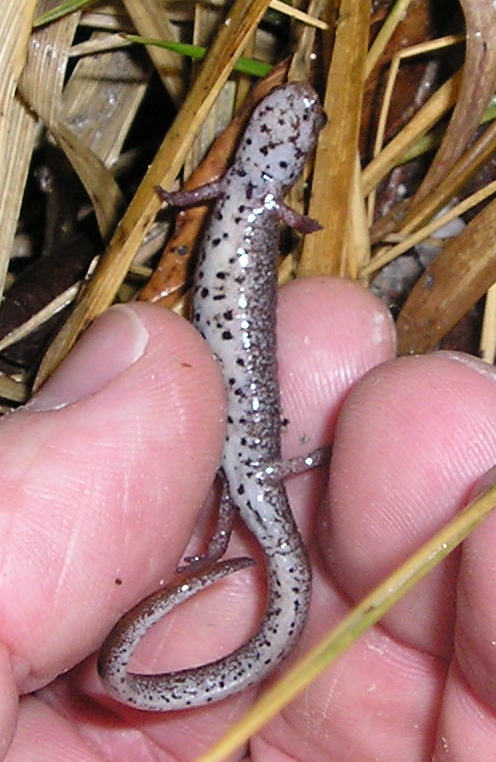
Herp Update: amphibian reports, road search education, salamander ID — April 9, 2022
Recent Activity
Herpers, many amphibian reports and photos have come in over the past week. At the moment I have about 40 reports in my inbox and it will be a few days before I catch up with them and longer still before we get them into our database.
Here in the Lake Champlain Basin, we are hearing both Spring Peepers and Wood Frogs calling from the breeding ponds, so most of them have already moved. All the Wood Frogs will lay their eggs and leave the ponds within a couple weeks of their first arrival. The Spring Peepers will continue to call and breed for a couple months.
Spotted, Blue-Spotted, and Four-toed Salamanders are still moving to ponds. Remember that amphibian activity is later as you move up in elevation and latitude and also on north slopes of mountains and other areas that don’t get much sun.
Here in the valley we have also been listening to Northern Leopard Frog choruses. Outside, the Lake Champlain Basin, you don’t have much of a chance of hearing this species, since they lay their eggs primarily in the floodlands adjacent to Lake Champlain and its major rivers. Any Northern Leopard Frog found outside the Lake Champlain Basin is an important find and should definitely be reported.
Morgan Road Tally
Here in Salisbury, we had our second and last public education event for the season at Morgan Road. We had 61 volunteers that reported a total of 477 amphibians (and one passing car) over the 1 & 3/4 hours that we were on site. Keep in mind that many more amphibians moved after we had left the site and on other evenings when we were not watching. Also, we hope that thousands more are moving in areas where there are not roads between their overwintering and breeding areas. Maintaining these undeveloped and connected lowlands and uplands is important for all wildlife.
Our species totals at Morgan Road were:
- Blue-spotted and related hybrids, 214 alive, 1 dead
- Four-toed Salamanders, 133 alive, 1 dead
- Eastern Red-backed Salamanders, 98 alive
- Spotted Salamanders, 17 alive
- Eastern Newt, 2 dead
- Wood Frog, 6 alive
- Spring Peeper, 5 alive
Four-toed Salamanders
We still have much to learn about the distribution of Four-toed Salamanders in Vermont. I believe that the great majority of their populations have not yet been reported. Double check those little skinny salamanders that look like Eastern Red-backed Salamanders. They may be Four-toed Salamanders.

Unlike Eastern Red-backed Salamanders, Four-toed Salamanders are slow and easy to pick up. Check their bellies for their characteristic bright white backgrounds with scattered black dots.
I will attach our quick ID chart and a larger version of the underside (venter) of a Four-toed Salamander (photo contributed by Toby Alexander of the Natural Resource Conservation Service).
Jim Andrews
“Anyone who believes that exponential growth can go on forever in a finite world is either a madman or an economist” (Kenneth Boulding, 1973)

